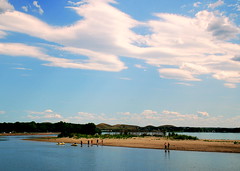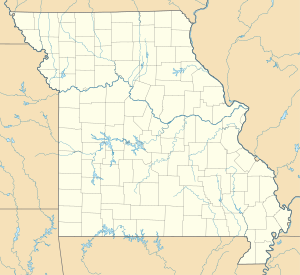
The Conservation Commission met Aug. 15 and 16 in Jefferson City. Commissioners present were:
Don C. Bedell, Sikeston, Chair
James T. Blair, IV, St. Louis, Vice Chair & Secretary
Don R. Johnson, Festus
Tim E. Dollar, Blue Springs, Member
REGULATIONS
The Commission approved the following 2013-14 waterfowl hunting seasons and limits.
Duck Season:
North Zone: Oct. 26- Dec. 24
Middle Zone: Nov. 2 – Dec. 31
South Zone: Nov. 28 – Jan. 26
Shooting Hours: One-half hour before sunrise to sunset.
Bag Limit: Six ducks daily with species restrictions of:
§ 4 mallards (no more than 2 females)
§ 3 scaup
§ 3 wood ducks
§ 2 redheads
§ 2 hooded mergansers
§ 2 pintails
§ 2 canvasbacks
§ 1 black duck
§ 1 mottled duck
Possession Limit: Three times the daily bag (in total 18; varies by species).
Coot season: Concurrent with duck seasons in the respective zones with a daily bag limit of 15 and a possession limit of 45.
Goose Season:
§ Blue, snow, and Ross’s geese: Statewide, Oct. 26 – Jan. 31 (98 days)
§ White-fronted geese: Statewide, Nov. 28 – Jan. 31 (65 days)
§ Canada geese and brant: Statewide, Oct. 5 – Oct. 13 (9 days)
Nov. 28 – Jan. 31 (65 days)
Shooting Hours: One-half hour before sunrise to sunset.
Bag/Possession Limit: The bag and possession limits include no more than three Canada geese daily (nine in possession), 20 blue, snow, or Ross’s geese daily (no possession limit), two white-fronted geese daily (six in possession), and one brant daily (three in possession).
YOUTH HUNTING DAYS: Any person 15 years of age or younger may participate in the youth waterfowl hunting days without permit, provided they are in the immediate presence of an adult 18 years of age or older. If the youth hunter does not possess a hunter education certificate card, the adult must meet permit requirements that allows small-game hunting and have in his or her possession a valid hunter-education certificate card unless they were born before Jan. 1, 1967. The adult may not hunt ducks but may participate in other seasons that are open on the special youth days.
North Zone: Oct. 19-20
Middle Zone: Oct. 26-27
South Zone: Nov. 23-24
Bag Limit: Bag limits and shooting hours for ducks and geese are the same as during the regular waterfowl season.
FALCONRY SEASON FOR DUCKS, COOTS, AND MERGANSERS: The federal framework allows 107 days. Falconry is open during teal season (16 days), regular gun duck season (60 days), and youth season (two days) in the respective zones, leaving 29 days remaining for extended falconry.
Statewide, Feb. 10 - March 10
Shooting Hours: One-half hour before sunrise to sunset.
Bag Limit: The daily bag and possession limits shall not exceed three and nine birds, respectively, singly, or in the aggregate during the regular duck hunting seasons (including teal and youth seasons) and extended falconry seasons.
LIGHT GOOSE CONSERVATION ORDER: Persons must possess a Conservation Order permit to chase, pursue, and take blue, snow and Ross’s geese between the hours of one-half hour before sunrise to one-half hour after sunset from Feb. 1 through April 30, 2014. An exception to the above permit requirement includes any person 15 years of age or younger provided either 1) s/he is in the immediate presence of a properly licensed adult hunter (must possess a Conservation Order Permit) who is 18 years of age or older and has in his/her possession a valid hunter education certificate card, or was born before Jan. 1, 1967 or 2) s/he possesses a valid hunter education certificate card. Any other regulation notwithstanding, methods for the taking of blue, snow and Ross’s geese includes using shotguns capable of holding more than three shells, and with the use or aid of recorded or electronically amplified bird calls or sounds, or recorded or electronically amplified imitations of bird calls or sounds. A daily bag limit will not be in effect during the Conservation Order.
ZONE DESCRIPTIONS:
NORTH ZONE: That portion of Missouri north of a line running west from the Illinois border at Lock and Dam 25; west on Lincoln County Hwy. N to Mo. Hwy. 79; south on Mo. Hwy. 79 to Mo. Hwy. 47; west on Mo. Hwy. 47 to I-70; west on I-70 to the Kansas border.
SOUTH ZONE: That portion of Missouri south of a line running west from the Illinois border on Mo. Hwy. 74 to Mo. Hwy. 25; south on Mo. Hwy. 25 to U.S. Hwy. 62; west on U.S. Hwy. 62 to Mo. Hwy. 53; north on Mo. Hwy. 53 to Mo. Hwy. 51; north on Mo. Hwy. 51 to U.S. Hwy. 60; west on U.S. Hwy. 60 to Mo. Hwy. 21; north on Mo. Hwy. 21 to Mo. Hwy. 72; west on Mo. Hwy. 72 to Mo. Hwy. 32; west on Mo. Hwy. 32 to U.S. Hwy. 65; north on U.S. Hwy. 65 to U.S. Hwy. 54; west on U.S. Hwy. 54 to U.S. Hwy. 71; south on U.S. Hwy. 71 to Jasper County Hwy. M; west on Jasper County Hwy. M to the Kansas border.
MIDDLE ZONE: The remainder of Missouri.
NONTOXIC SHOT: Shells possessed or used while hunting waterfowl and coots statewide, and for other species as designated by posting on public areas, must be loaded with material approved as nontoxic by the U.S. Fish and Wildlife Service.
The Commission also approved clarifications to some sections of the Wildlife Code, made corrections to some conservation area names, and modified regulations for specific areas. Details will be published in the Missouri Register,
sos.mo.gov/adrules/moreg/moreg.asp in November.
ADMINISTRATION
The Commission:
- Received staff presentations from:
Ø Policy Supervisor David Thorne regarding Conservation Goals and Challenges.
Ø Public Involvement Coordinator Amy Buechler regarding public input on conservation-area management plans
Ø Wildlife Programs Supervisor Dennis Figg regarding Healthy Forests, Fish, and Wildlife: The Comprehensive Conservation Strategy.
- Approved the advertisement and sale of an estimated 1 million board feet of timber on 608 acres of Compartment 10 at Current River CA in Reynolds County.
- Accepted the donation of approximately .25 acres in Phelps County as an addition to Beaver Creek CA.
- Approved the purchase of 265 acres in Shannon County as an addition to Angeline Conservation Area (CA).
· Suspended hunting, fishing, and/or trapping privileges of 29 Missouri residents and six nonresidents for Wildlife Code violations. Those whose privileges were suspended are:
Phillip Applegate Jr., Morrisville, hunting, 1 year
Leland E. Barnes, Warsaw, fishing, lifetime
Nickolay G. Biliychuk, Springfield, fishing, 2 years
Robert K. Cassinger, Ellington, hunting, an additional 2 years
Timothy J. Compas, Cape Girardeau, hunting and fishing, until April 8, 2015
David A. Davis, Climax Springs, fishing, 1 year
Wayne A. Dillon, Clinton, hunting and fishing, 1 year
Nickolay F. Fomin, Sedalia, fishing, 2 years
Billy D. Helm, Salisbury, commercial fishing, 1 year
Hinh V. Ho, Kansas City, all sport privileges, 1.5 years
Randy R. Howlett, Waynesville, hunting, 3 years
Leonid Khomichuk, Clifton Park, NY, fishing, 3 years
David A. Knox, Climax Springs, all sport privileges, 6 years
Kenneth I. Kobbe, Plattsburg, all sport privileges, 1 year
Vitaliy N. Konkin, Portland, Ore., fishing 6 years
Michael Krout, Warsaw, hunting, 2.5 years
Michael L. Matney, Dexter, hunting and trapping, 1 year
Mark Ognevchuk, Mora, fishing, 1 year
Jason R. Pearson, Caulfield, hunting, 1 year
David R. Pichinevsky, Houstonia, fishing, 2 years
Chad Porter, Jasper, hunting, 3 years
James W. Rogers, Climax Springs, fishing, 7 years
Vyacheslav Rotar, Springfield, fishing, 1 year
Larry E. Sharp, Climax Springs, hunting, 1.5 years
Peter Sharpelyuk, Chariton, Iowa, fishing, 3 years
Phillip J. Shepard, Filmore, hunting, 1 year
Shelby P. Snedegar, Deepwater, all sport privileges, 1 year
Michael R. Steele, Fairview, hunting, an additional 6 months
Leonid Taylor, West Dundee, Ill., fishing, 3 years
Vladimir Tsipan, Green Ridge, fishing, 1 year
Leonid Tsurkan, Sedalia, fishing, 1 year
Sergey Vedernikov, Rogersville, fishing, 1 year
Vladimir P. Voytukhov, North Port, Fla., fishing 3 years
Randy E. Yates, Wayland, hunting, 3 years
Veniamin Zubkov, Woodborn, Ore., fishing, 3 years
- Approved the suspension or revocation of all hunting and fishing privileges of 259 people who are not in compliance with applicable child-support laws. Privileges suspended for noncompliance are reinstated once the Division of Child Support Enforcement notifies MDC that suspendees have come into compliance with the required laws.
- Suspended privileges of 247 people under the provisions of the Interstate Wildlife Violator Compact.
· Suspended the hunting privileges of three people who injured other persons in hunting incidents. The hunters must complete a hunter-education training course before restoration of privileges.
· Set its next regular meeting for Oct. 3 and 4.


















